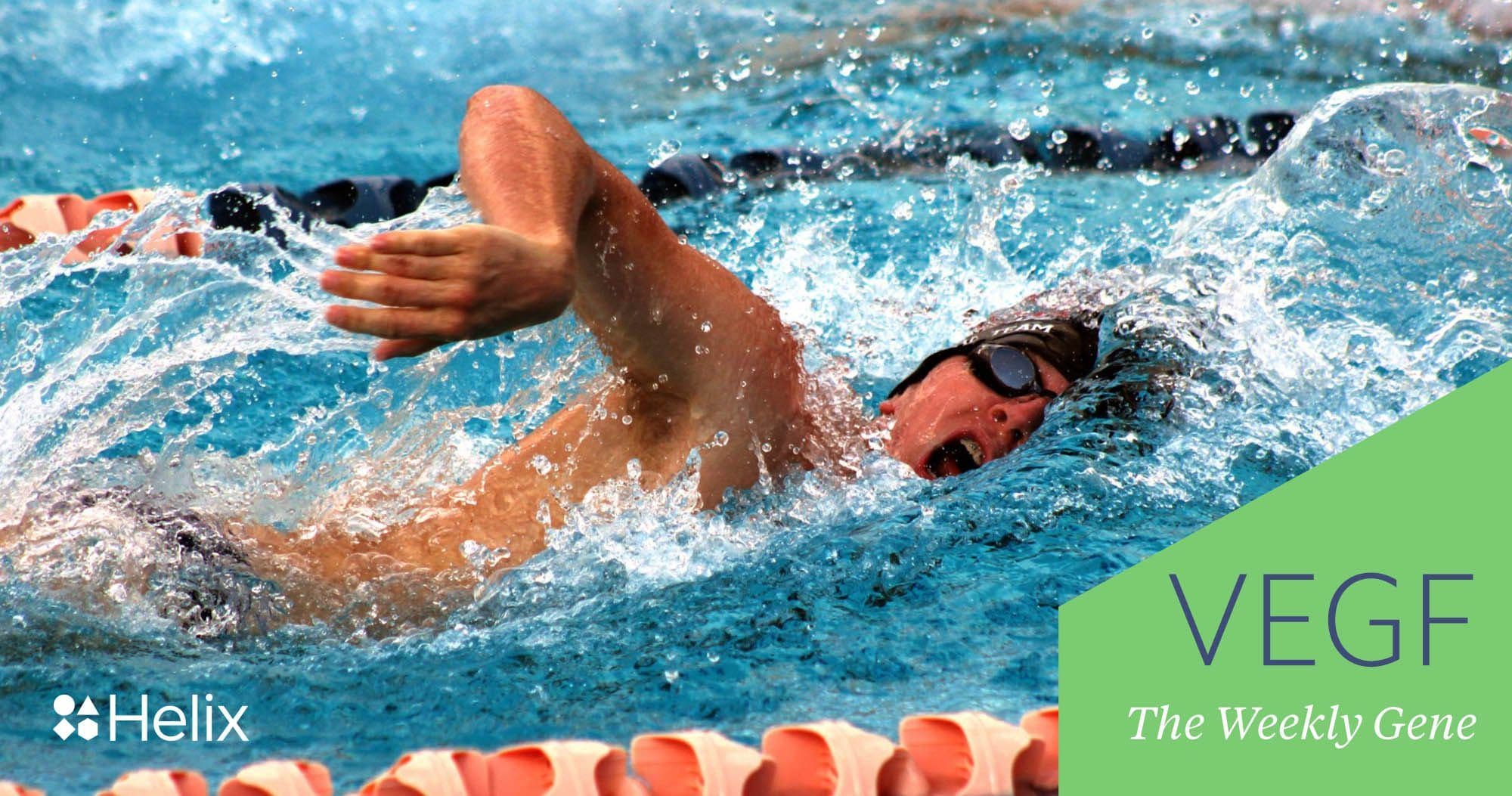When cells panic, blood vessels grow

Welcome to The Weekly Gene, a blog series brought to you by Helix that introduces a different human gene each week. We’ll share important facts, relevant research, and how these genes might be related to certain conditions and traits. It’s a great way to build your DNA vocabulary, learn more about the code that makes all of us unique, and find a path to the genetic insights that are important to you.
Want to know more about a specific gene? Let us know by tweeting @my_helix with #WeeklyGene.
Dappled specks of light dance through the water, illuminating an aquamarine floor. As your eyes scan the seascape, a sinking feeling wells up from your stomach and panic begins to set in when you realize you’re a long way from the surface. With a flurry of kicks, you roar past the surface and gasp for air. You need oxygen, and you’re born with instincts for getting it. But your body’s drive to find oxygen goes further than a brief panic in the water—it’s actually in your genes.
Oxygen enters your body through the lungs and gets picked up by blood cells. These cells are then pushed throughout the body in blood vessels, elastic structures that penetrate all areas of your body. In most cases, cells are never more than 100µm—less than the width of a human hair—from the nearest vessel.
This elaborate network ensures that every cell has the oxygen it needs to function. When parts of the body lack sufficient oxygen levels for an extended period of time, new blood vessels grow to increase the amount of blood and oxygen flowing to that tissue. There are multiple factors that tip off the blood vessels that there is new growth needed, but one of the most significant signals comes from distressed cells in the form of VEGF.
VEGF, which stands for Vascular Endothelial Growth Factor, is the name of a whole group of proteins responsible for the regulation of vascular growth. The most studied of these is VEGFA due to its critical role in human development, health, and disease. VEGFA is a signaling protein released from cells in response to insufficient oxygen, which can occur for many reasons including high altitude, chemical poisoning (like from carbon monoxide), or more commonly due to exercise.
Muscle cells use a lot of oxygen during exercise which quickly depletes the cellular environment of available oxygen. This is part of the reason why your heart rate increases during exercise—to increase blood and oxygen flow to muscles. As far back as the 1930’s, we’ve known that exercise can induce new blood vessel growth in muscles, which was later shown to be the result of VEGFA released from muscle cells. By delivering more oxygen, your body enables muscles to engage in strenuous exercise while maintaining muscle cell health and capacity for growth.
So what do your genetics have to do with all of this? Among the 120 genetic variants1 with suggested links to human athleticism, some interesting variants have been identified in the VEGFA gene with a proposed link to athletic performance, specifically to oxygen regulation during exercise2. A follow-up study3 provided preliminary evidence that a variation in this gene might combine with multiple others to increase an athlete’s endurance potential. This single base change in the DNA sequence is proposed to affect production of VEGFA; however, it’s not yet clear what impact it has on overall VEGF function during exercise.
VEGFA is clearly an important gene in human physiology, and the most recent evidence exploring a potential link to athleticism holds exciting potential. Having these variants may predispose you to athleticism, but life choices and personal drive play a much larger role. That’s why you’ll find products in the Helix Store that take both genetics and lifestyles into account. The result? Fitness routines, nutrition suggestions, and a variety of other insights that are tailored to you and the way you live.

1Ildus I. Ahmetov, Olga N. Fedotovskaya. “Current Progress in Sports Genomics.” Advances in Clinical Chemistry, vol 70, 2015, Pages 247-314, ISSN 0065-2423, http://dx.doi.org/10.1016/bs.acc.2015.03.003.
2Prior, S. J. “DNA sequence variation in the promoter region of the VEGF gene impacts VEGF gene expression and maximal oxygen consumption.” AJP: Heart and Circulatory Physiology, vol. 290, no. 5, 2006, doi:10.1152/ajpheart.01033.2005.
3Ahmetov, I. I., et al. “Polymorphism of the vascular endothelial growth factor gene (VEGF) and aerobic performance in athletes.” Human Physiology, vol. 34, no. 4, 9 Aug. 2008, pp. 477–481., doi:10.1134/s0362119708040129.